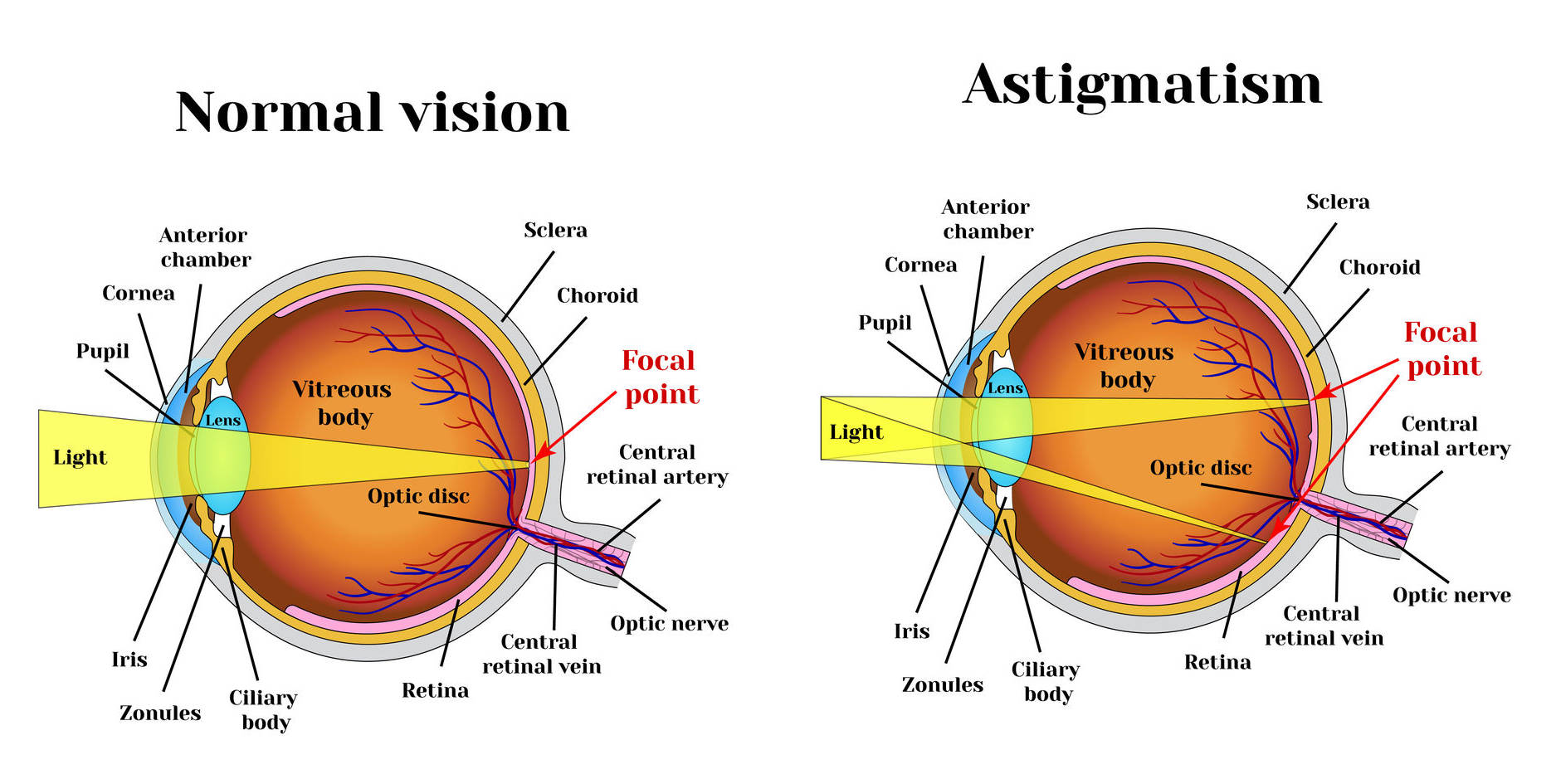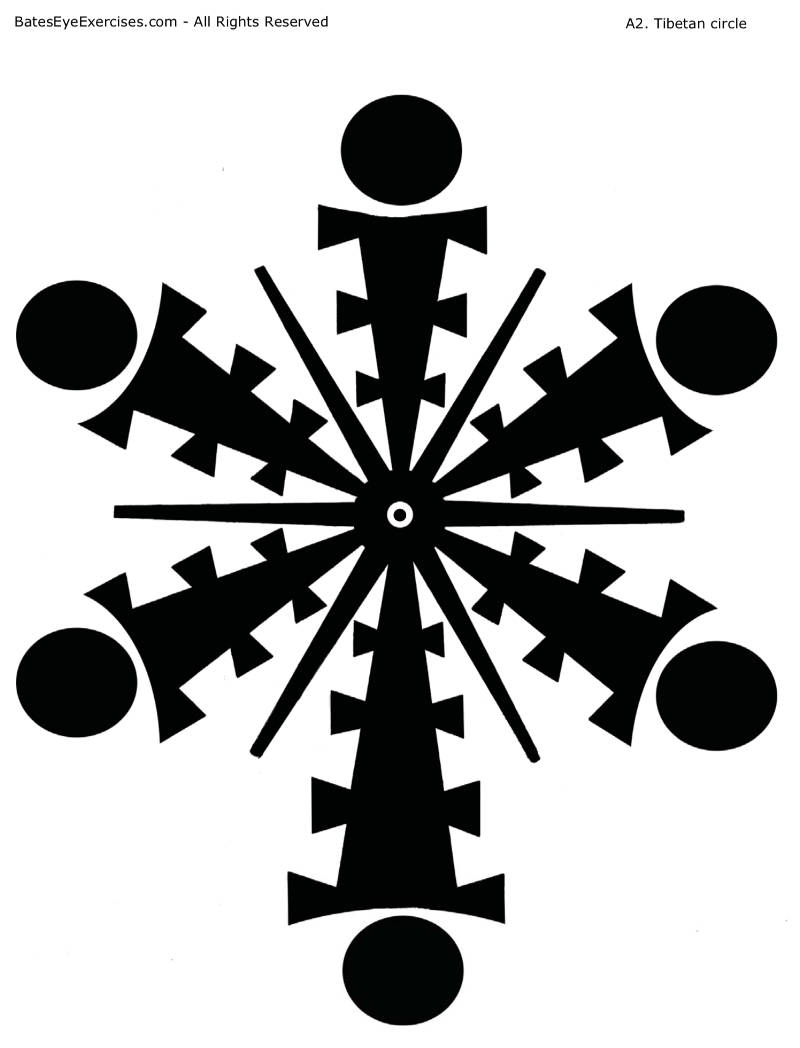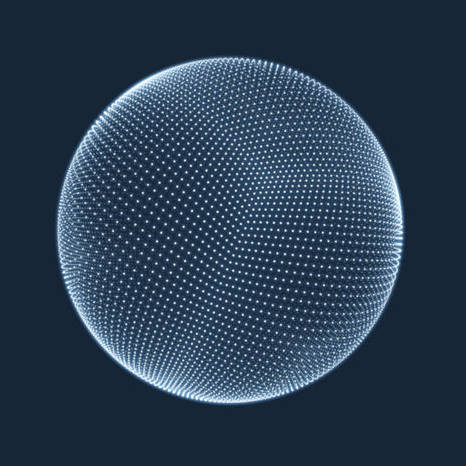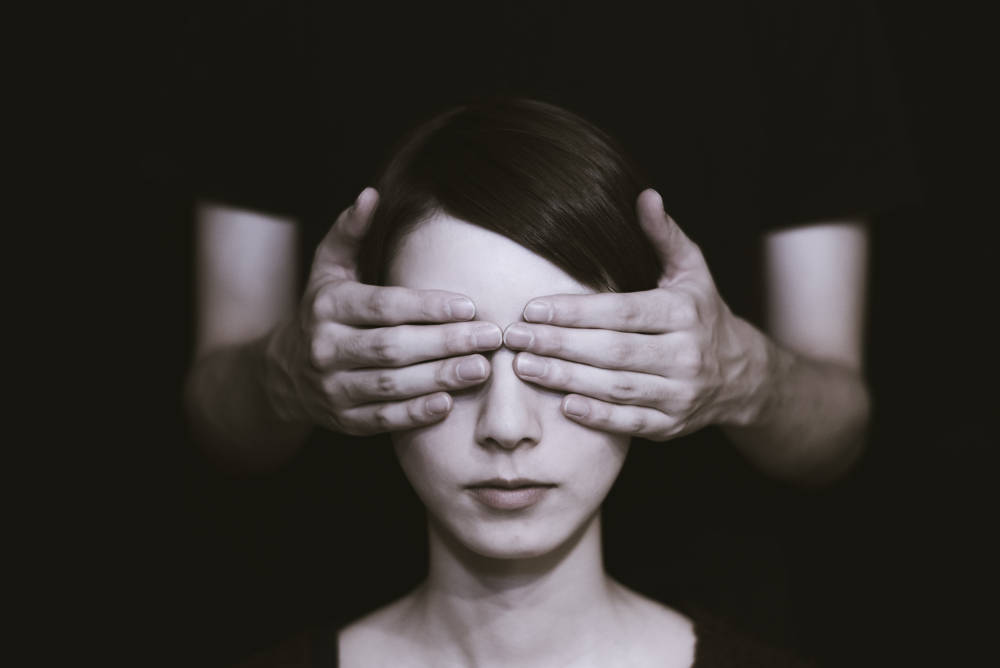Astigmatism is a focal disorder that occurs due to changes in the surface of the cornea or lens, which causes blurring and distortion of perception. In most cases, astigmatism occurs along with one of the defects – shortsightedness or farsightedness.
More information on this defect can be found here
Contrary to the common belief, astigmatism can be corrected easily through relaxation. Astigmatism is also a very good example of how the eye training is helpful in this kind of defects. There were cases of successful correction of astigmatism defects (~1 diopters) by these exercises within one day. With larger defects, a several-week training was often enough. It is quite an achievement against, for example, the treatment of shortsightedness. It seems very likely that the cause of this defect lies in stress of the eye rectus muscles. Therefore, these exercises are designed mainly to improve the condition of rectus muscles, relax them and reduce their stress. Try to return once in a while to the “astigmatic mirror” checking your progress in practice. I hope you will come to the point where all the lines are straight and black.



